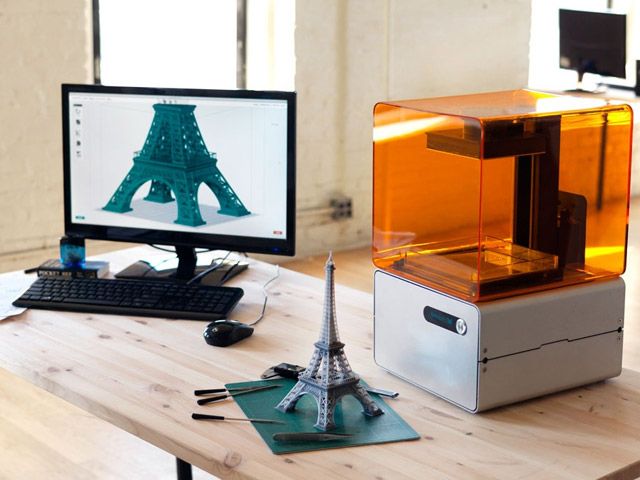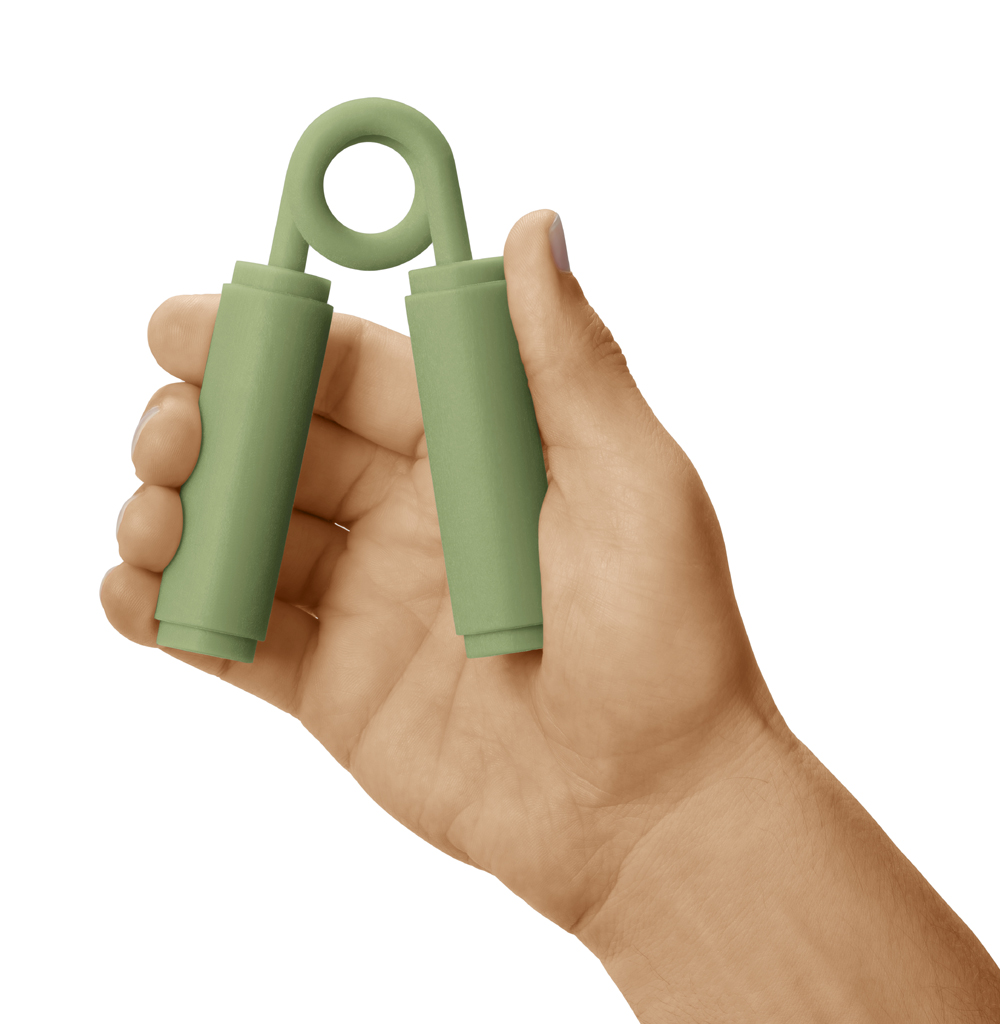
The forthcoming FORM 1 desktop stereolithography AM system has generated enormous amounts of interest from Kickstarter backers and private investors. Courtesy of Formlabs.
Latest News
November 6, 2013
In the course of my diligent efforts to keep you good people up to date on the state of additive manufacturing (AM), I come across many interesting news items. I’ll gather them up every so often and present them in a Rapid Ready Roundup (like this one). You can find the last Roundup here.
We’ll start today’s Roundup with a quick piece of materials news. Stratasys has released a new material named ABS2 for its line of Object Connex AM systems. According to the company, the new material has been designed to improve rigidity, durability and functionality for 3D printed objects with fine details and thin walls. Stratasys also claims ABS2 is ideal for printing cores and cavities for use in low-volume injection molding applications using thermoplastics.

“In addition to general purpose applications, Digital ABS2 is ideal for prototyping consumer electronics and other consumer goods, including small appliances and cell phones, which require high stability with thin-wall geometries,” said Fred Fischer, director of materials and applications product management at Stratasys.
Moving on, following in the steps of its monumentally successful $2.95 million Kickstarter campaign, Formlabs has received additional investment funding to the tune of $19 million. Among those interested in backing a desktop stereolithography machine were DFJ Growth, Pitango Venture Capital, Innovation Endeavors, and a number of returning angel investors. Along with continuing research and development, Formlabs is using the investment to move operations to an 11,000 square-foot facility in Somerville, MA.
“There is still a wide open space in front of us to continue innovating and bringing incredible new products to the market; with these new resources, we’ll be able to continue to push the envelope, making extraordinary new tools available around the world,” said co-founder Maxim Lobovsky. “The group we’re putting together to get here is the most creative and passionate team working in 3D printing and I’m personally excited about using this new investment to grow our team and take digital fabrication to the next level.”

Next up we come to a new development in the battle between IP rights, gun control and 3D printing. Matthew Plummer-Fernandez, creative technologist for Goldsmith College’s Interaction Research Studio at the University of London, has designed a free app he calls the “Disarming Corruptor.” Disgruntled by his inability to get an “artistically altered” statuette of Mickey Mouse printed by Materialise, Plummer-Fernandez developed the app to hide the details of digital files used for AM.
The app distorts shapes based on an assigned value from zero to 100, disguising the appearance of a digital design. Anyone with the key value can then reverse the distortion and print out the file. Plummer-Fernandez specifically mentioned 3D printed guns as one type of file that could benefit from his app, to sneak by security protocols. He has also been encouraging people to post potentially IP threatening designs on Thingiverse using his app to hide possible piracy.
Finally for today, in a similar yet unrelated bit of news that might have interested Mr. Plummer-Fernandez, UK police in Manchester seized what they believed to be 3D printed parts designed to build firearms. This provoked something of a media frenzy in the UK, until a reader identified the parts in question were actually parts for building an additional AM system, not illegal guns.
The entire incident might have been considered humorous if Manchester police had simply admitted to making a mistake. Instead, Assistant Chief Constable Steve Heywood issued the following statement:
“Clearly the fact we have seized a 3D printer and have intelligence about the possible production of a weapon using this technology is of concern. It is prudent we establish exactly what these parts can be used for and whether they pose any threat.
“What this has also done is open up a wider debate about the emerging threat these next generation of weapons might pose.
“The worrying thing is for me is that these printers can be used to make certain components of guns, while others can be legitimately ordered over the Internet without arousing suspicion. When put together, this could allow a person to construct a firearm in their own home.”
While I’m not particularly a fan of 3D printed guns, I’m fairly certain this isn’t the tone the AM industry wants set for the use of the technology. Fear-based appeals of the sort issued by the Manchester police undermine the goodwill generated by the vast majority of peaceful uses of AM, and make it ever more likely that some bureaucrat, some place, will decide 3D printers are too dangerous for general use by the public.
Below you’ll find a video from Stratasys about the use of 3D printers to build injection molding tools.
Sources: Gigaom, Chicago Tribune, Formlabs, Stratasys
Subscribe to our FREE magazine, FREE email newsletters or both!
Latest News
About the Author
John NewmanJohn Newman is a Digital Engineering contributor who focuses on 3D printing. Contact him via [email protected] and read his posts on Rapid Ready Technology.
Follow DE





